
Published: December 19, 2023
Picture this: you're giving a room in your home a complete makeover. From the paint color to the furniture, and all the little pieces in between to add that finishing touch, your room is going through a full remodel. The question is, how do you find the right combination of colors, shapes, and visual interest to create a cohesive style? This blog will take you through all the necessary topics of color theory and geometric shaping so you can build a balanced style throughout your home. Let's get colorful!
Color Theory
Color theory embodies the concepts and ideas surrounding how colors interact with each other. This is used in fashion, makeup, hair, and home design. However, in order to discuss color theory, we must go back to the fundamentals: the color wheel.
The color wheel is a visual that shows how colors mix to create new colors and where they sit on the color spectrum. The three primary colors are yellow, red, and blue. Every other color is a combination or variation of these three colors.
Complimentary colors are opposite of each other on the color wheel. When complimentary colors are put together, they appear more intense since they contrast.
Analogous colors are next to each other on the color wheel, meaning that they are more similar in tone. Examples of analogous colors would be violet, indigo, and dark blue.
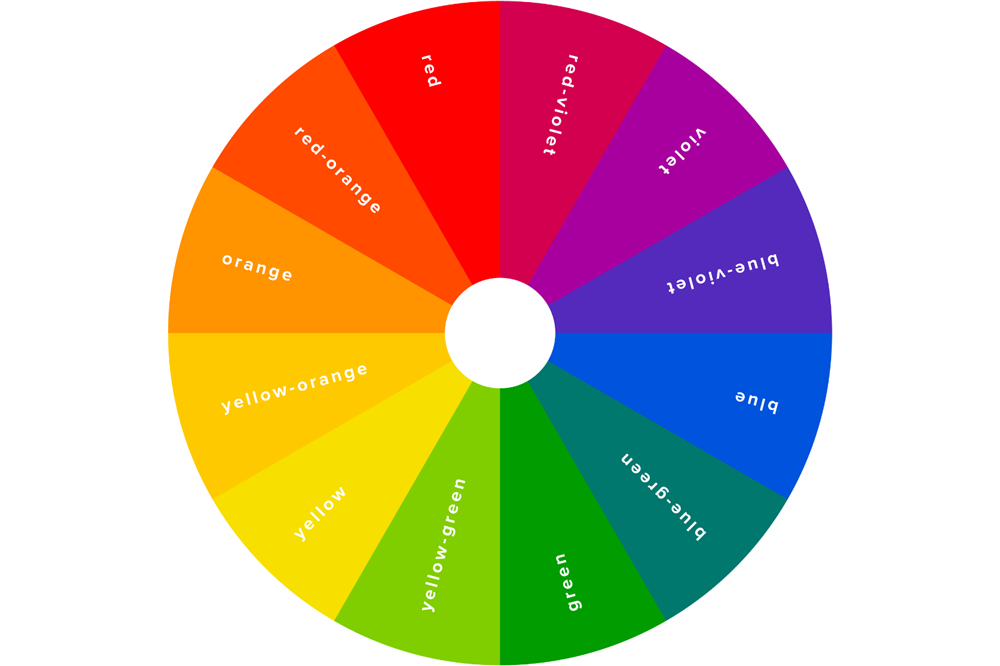
Color Palette vs Style
When designing a color palette for your home, it’s imperative to think about the style you are going with; specific styles have a general color scheme. For example, sleek, neutral minimalism would clash with neon, while midcentury modern would look strange with cool blues and grays.
Best Style and Color Combinations
Black, gray, cool metals, and dark wood tones go well with industrial, manufactured type looks.
Jewel tones such as emerald, ruby, sapphire, and magenta have a vibrant pop with the wood stains of traditional furniture.
Warm, earthy browns and beiges create cozy midcentury modern vibes.
Whites and muted tones help to create the clean image that minimalism strives for.
An eclectic array of bright colors brings together the stereotypical bohemian style.
How to Create a Color Palette
Creating a color palette can be a daunting task, but it doesn’t need to be as complicated as it sounds. Furniture Mart graphic designer Ashley Van Well explains that 3-5 colors are a good range for a color palette. However, she also encourages people to explore monochromatic looks as well: she says that the most important aspect of bringing colors together is to ensure they have the same intensity.
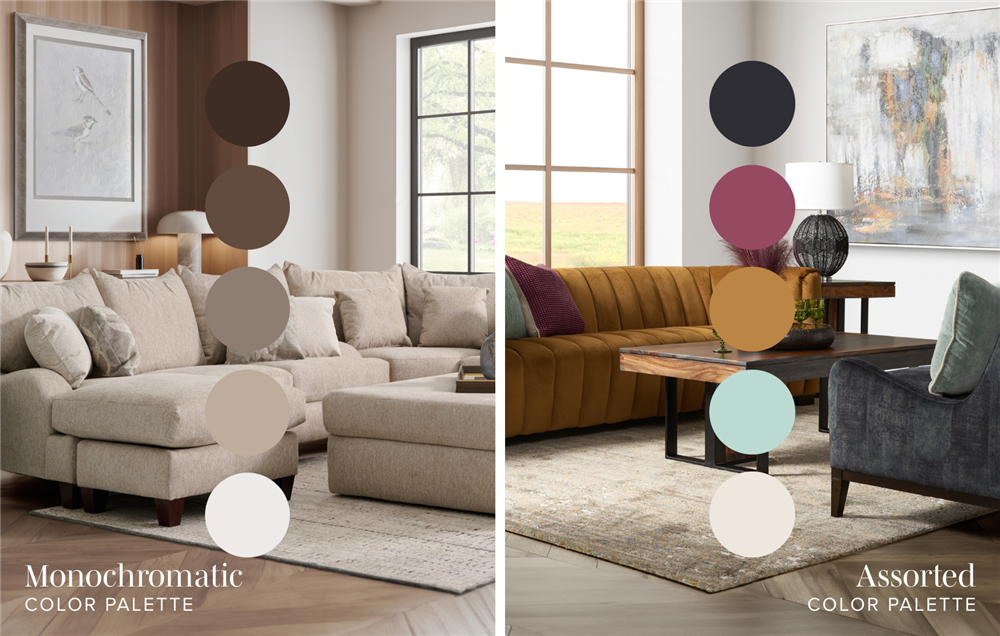
Utilizing a color palette helps to make your home look cohesive. Consider bringing this color palette throughout your home, or at least using colors with the same level of intensity throughout different rooms.
Van Well advises people to think about how seasonal décor will look with their daily home décor. She points out that you can play around with different shades of holiday colors so they look cohesive with your space. For instance, if you have a muted color scheme, sage green and a soft red would be the best shades for Christmas décor, but if you have jewel toned colors you can punch up the intensity with ruby and emerald décor.
Color Combination Ideas
Combine black, white, and a bold accent color for a classic look with a modern twist.
Bring medium and dark greens with shades of brown together for an earthy feel.
For a duo that feels modern yet timeless, you can combine mustard yellow and charcoal gray.
Play with blues and off-whites for a versatile vibe (this can work for European, coastal, or classic looks).
Go for a monochromatic look with different shades of your favorite color.
Create a striking statement with bright colors like pink, yellow, and green.
Lean into analogous colors by going with cool purples, blues, and greens.
Bring the heat with a mix of reds, oranges, and yellow.
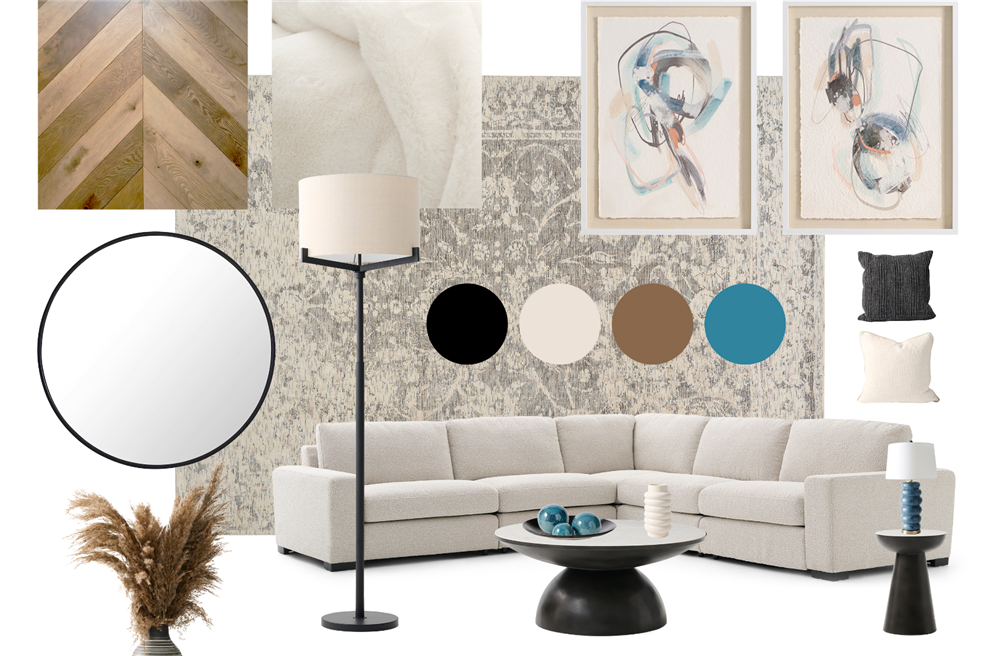
Still Looking for Inspiration?
Create a vision board with article clippings, color swatches, and inspirational photos: then look for common colors and styles among them.
Look at your wardrobe. What color do you own the most of? Is there a decade of fashion or specific style you’re drawn to? How can that translate to your home décor?
Think about your favorite color growing up. How can you bring it into a sophisticated palette to reconnect with your younger self?
What kind of environment do you live in? Cool tones fit on rivers, lakes, oceans, and other water landscapes, while warm tones do well in the dessert or plains. Greens and browns look fabulous in the forest. If you live in an urban setting, industrial colors include grays and blacks.
Head to your nearest Furniture Mart to browse and make note of your favorite finds. Request help from expert employees who can assist with finding what to pair with your discoveries.
Organic vs Geometric Shapes
Organic shapes are most notably recognized as “free form” shapes with natural curves. Examples of organic shapes are often found in nature, including leaves, flowers, and animals.
Geometric shapes refer to the overall blanket term “shapes”. Geometric shapes include circles, rectangles, triangles, shapes with sharper angles, and more.

Most furniture and décor that fall under the category of organic shapes still have some sharp angles and lines for the piece to be functional. To distinguish if a piece is an organic shape, look for decorative curves. Shapes transcend style, which can be seen in the examples below.
Sectionals
Swivel Chairs
Beds
Wooden Side Tables
Dining Collections
While some styles tend to use more of a certain type of shape than another, organic and geometric shapes are possible in your home no matter your design preferences. Some ways to bring shapes into your space include mirrors, rugs, coffee tables, throw pillows, wallpaper, and small décor items.
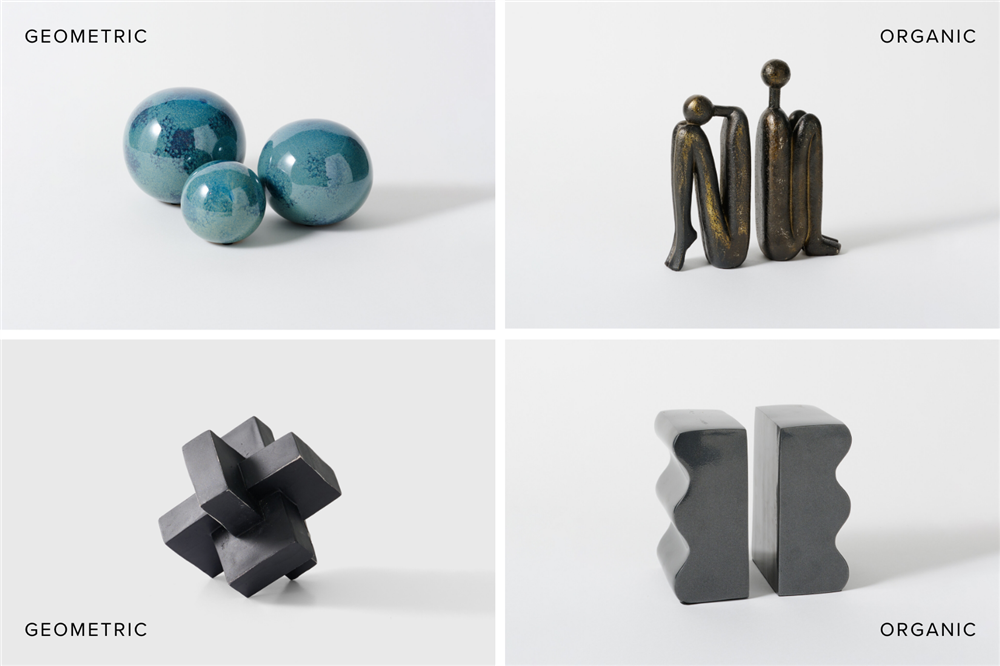
Bringing A Room Together
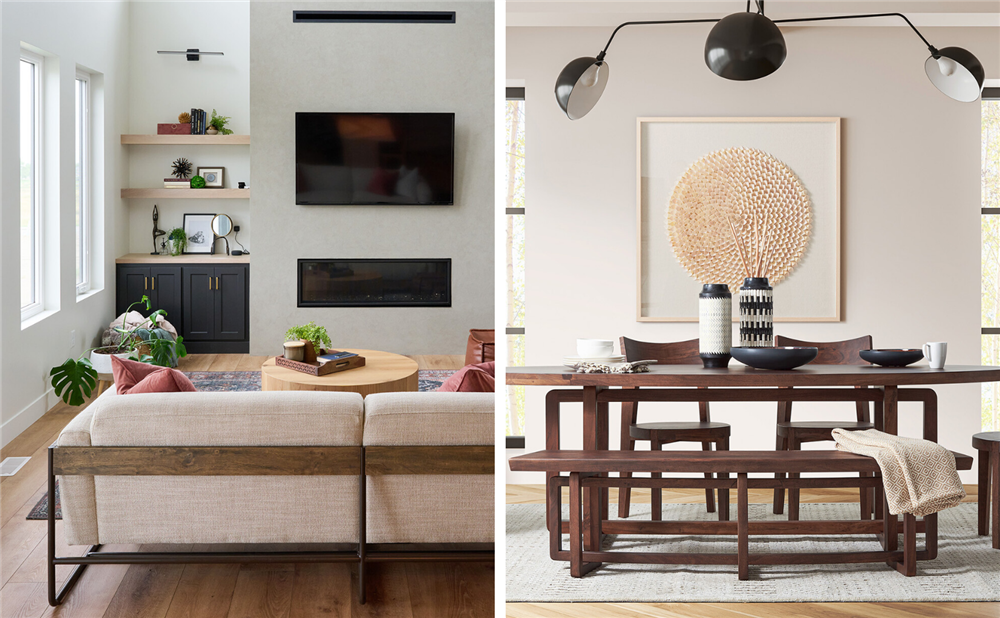
Both of these rooms have similar color schemes and styles, but can you spot which room leans into organic shapes, and which one utilizes more geometric shapes? The room on the left has clean, straight lines on the windows, cabinets, and shelves. It also has a rectangular fireplace and a circular coffee table. Even with the statue of the person in a yoga pose and plants, this room uses more geometric shapes. On the right, the light fixture, table and chairs, bowls, vases, and wall art all boast organic shapes. However, geometric shapes are still used in the rug, picture frame, and windows, making for a room of organic shapes with a touch of geometric.
Our Newest Feature: Norwalk Furniture
Ready to take the leap and balance the colors and shapes in your home? One way to start is through fabric. Furniture Mart and Norwalk Furniture have partnered to bring custom furniture options to shoppers who are searching for a unique, customizable look. Browse hundreds of options in velvet, tweed, leather, and woven fabric in every color or pattern you can imagine. Not finding your perfect fit? Norwalk Furniture allows you to use your own material as well. Stop by one of our Furniture Mart locations for a custom experience.
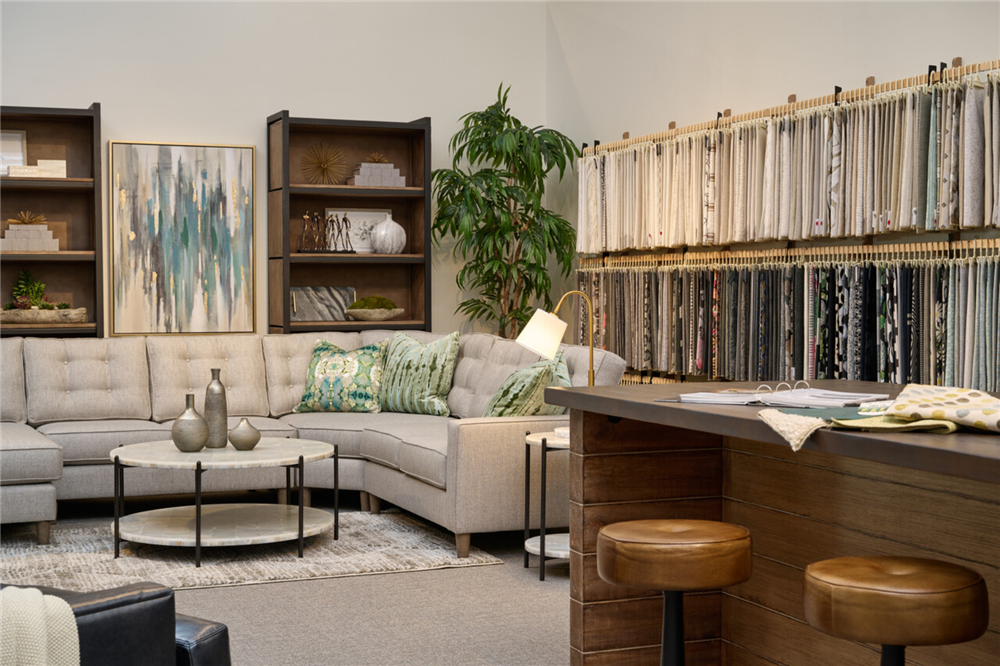
Key Takeaways
The color wheel is a useful tool when it comes to bringing color palettes together.
Certain design styles look better with particular colors.
There are many different color palette ideas and places to find inspiration.
The two types of shapes are geometric and organic. They are both seen together, but there is typically a dominant one for a room.
Furniture incorporates these different shapes in their design.
A great way to bring in shapes and colors is through custom furniture.